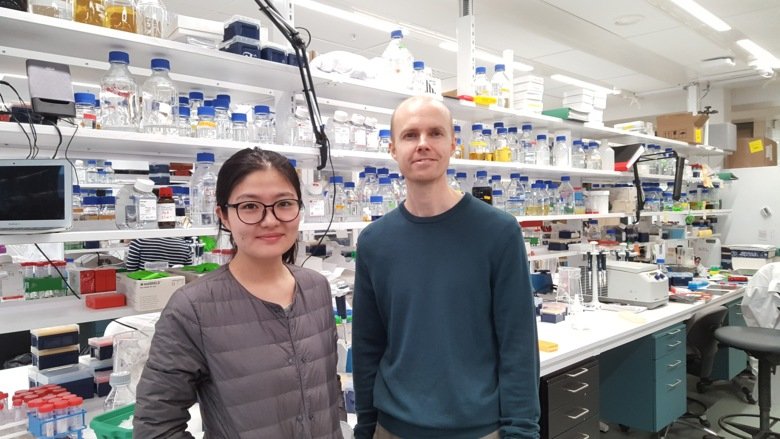Mitochondrial RNA degradation is essential for life

Researchers at Karolinska Institutet have discovered the essential role of the ribonuclease REXO2 in mitochondrial RNA degradation. The enzyme is essential for life, as a deficiency of it in mice has shown to be embryonic lethal. The study is published in the journal Molecular Cell.
We have asked two of the lead authors, Henrik Spåhr and Shan Jiang from the Nils-Göran Larsson group at the Department of Medical Biochemistry and Biophysics, about the most important results from their study.
“The mitochondria are the power plants of our cells and are essential for converting the energy in the food we eat to a useful cellular energy currency. Importantly, mitochondria contain their own genetic material, mitochondrial DNA (mtDNA). MtDNA is totally distinct from the majority of our genetic material that is located in the nucleus. Expression of mtDNA is essential for the energy conversion of the cell, and the first step is to copy (transcribe) mtDNA to mitochondrial RNA, which, in turn, is the template for making 13 proteins that all are critically important for the cellular energy conversion. Quite a bit is known about how mitochondrial RNA is formed, but critical steps in the degradation have remained unknown. In the present study, we have identified an enzyme that is required for the last step of RNA degradation in human mitochondria, called REXO2”, Henrik Spåhr explains.
“This enzyme selectively degrades nanoRNAs (dinucleotides) and it is essential for life, as REXO2 deficiency results in embryonic lethality in mice.”
How can this new knowledge contribute to improving human health?
“Regulation of mitochondrial function is critically important for human health”, Shan Jiang elucidates. “There are not only a large number of known inherited mitochondrial disorders that severely affect heart function and the nervous system, but decreased mitochondrial function also plays and important role in age-associated human diseases”.
How did you perform the study?

“This study is a result of a close long-term collaboration between national and international collaborators across Karolinska Institutet, the University of Gothenburg and the Harry Perkins Institute of Medical Research in Perth, Australia”, says Nils-Göran Larsson, professor and PI.
“The work was very comprehensive and involved the creation of a conditional knockout mouse model and determination of the crystal structure of REXO2 with bound nano-RNA. These studies were done in my laboratory at KI, while the protein biochemistry part, including the in vitro transcription assays were performed in Gothenburg. The deep RNA sequencing of mtRNA and the subsequent analysis of the data was done by our collaborators at the Harry Perkins Institute in Perth”.
The study was funded by the Swedish Research Council, the Swedish Cancer Foundation, the Knut and Alice Wallenberg Foundation, the European Research Council, grants from the Swedish state under the agreement between the Swedish government and the county councils, the ALF agreement, and grants and fellowships from the National Health and Medical Research Council, the Australian Research Council, the Cancer Council of WA, a Sir Henry Dale Fellowship jointly funded by the Wellcome Trust and the Royal Society and a Rosetrees and Stoneygate Trust Research Fellowship.
Publication
Dinucleotide Degradation by REXO2 Maintains Promoter Specificity in Mammalian Mitochondria.
Nicholls TJ, Spåhr H, Jiang S, Siira SJ, Koolmeister C, Sharma S, et al
Mol. Cell 2019 Sep;():
